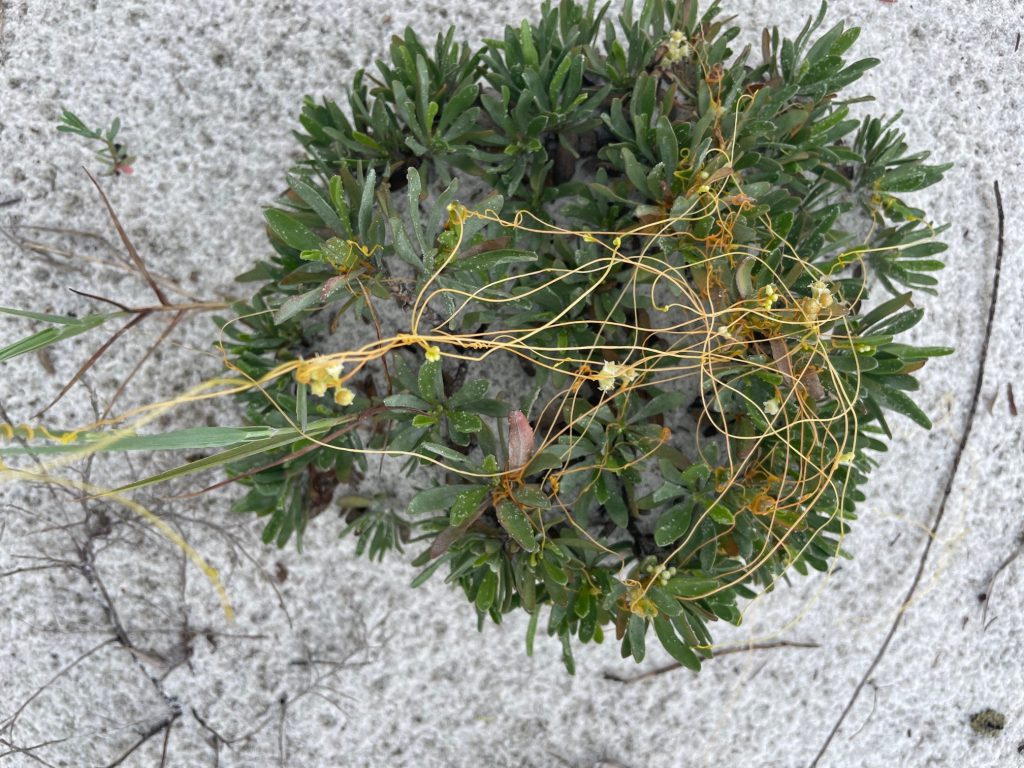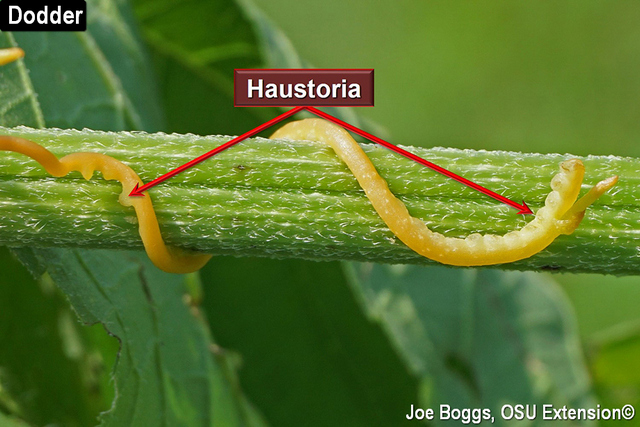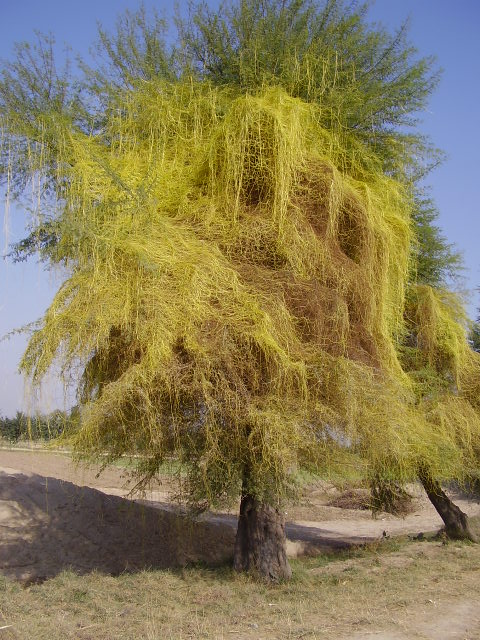If there was a prize for “plant most resembling silly string,” dodder would win. This unusual, vining plant has the appearance of a decorative afterthought, strewn along the tops of plants at random. Dodder is a parasitic plant, with over a hundred varieties growing worldwide. Given lots of harrowing nicknames—hellbine, devil’s guts, witches’ hair, wizard’s net, fireweed, scaldweed, and strangle weed—the plant clearly freaks people out. That wariness may be warranted, as recent research shows that dodder seedlings use a chemical sensory mechanism to detect gases emitted by potential plant hosts. To put it in more human terms, baby dodder plants can “smell” a proper plant host nearby, and start creeping that direction so they can attach and feed on it. Even the botanists who study it are a bit unnerved at how animal-like the plant seems. Dodders also have RNA functions that shut down host plant defenses, allowing free flow of nutrients from the plant directly to the parasitic dodder.

Dodder is a leafless plant that stays a muted gold/yellow because it does not produce enough chlorophyll to turn green. It takes its water and nutrients from host plants via modified peg-like roots called “haustoria.” Relying completely on the host plant, mature dodder plants let go of their soil-bound roots and reattach fully to the host.
The bell-shaped dodder flowers are produced this time of year (late summer/early fall) and emerge in clusters. The round seeds are quite small (1/16”) and can lie dormant—but viable—for over ten years in the soil.

For my fellow plant nerds out there, dodder is in the genus Cuscuta, and was long considered the only member of the Cuscutaceae family. However, it has more recently been placed in the family with morning glory vines (Convolvulaceae).
I typically see small dodder vines on coastal dunes or on woody shrubs in open natural areas further inland. Despite its parasitic nature, dodder is not a huge problem locally. It can, however, be a major nuisance in clover, soybean, and tomato crops. To manage dodder infestations, both the dodder and the plants it is hosting upon should be removed before seed production. To prevent spread, equipment used in an area with dodder should be cleaned before taking to another location.
Like many plants, dodder is being researched for its pharmaceutical benefits. In an article reviewing the medicinal properties of the plant, the authors noted “More than half of the clinically approved drugs in the world are either natural products or their modifications.” Long in use in traditional Indian and Chinese medicine for everything from tumors and ulcers to high blood pressure and migraines, modern studies show huge pharmacological promise due to anti-inflammatory, antiviral, anti-ulcer, and cancer prevention properties. While showing great potential for medicinal uses, never use a product like this without first consulting a medical professional.

- Green Anoles - July 11, 2025
- The Praying Mantis - June 20, 2025
- Bluebirds in Florida - May 8, 2025
